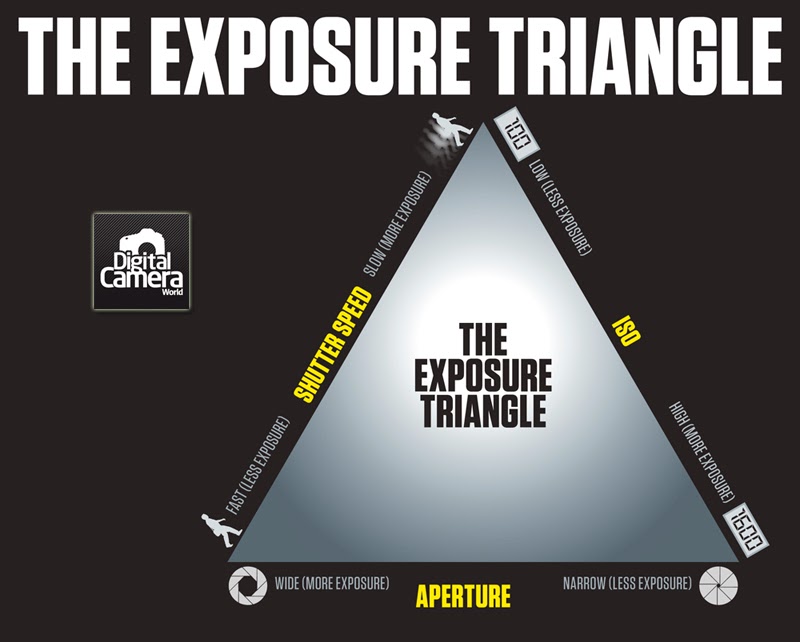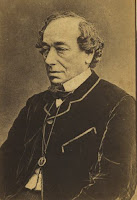ALL ASSIGNMENTS, STUDENT BLOGS, TIPS, RUBRICS, AND UPDATES CAN BE FOUND ON THIS SITE THROUGHOUT THE SEMESTER.
Hello Photographers!
I am happy you have chosen Photography again, and know that you will have a great semester. Truly, I love having repeat students, as it gives us a chance to more fully explore what you want to say with your photography; to develop your own personal "voice." I will give you my 100%, and expect yours in return. I will work hard, and hope that you will also. Hopefully, you will come out of the course with a great sense of accomplishment, an appreciation for the art of photography, and a way of seeing the world that will help enrich your life. I look forward to seeing the work you do. Let’s Photo! ☺
Hohman
________________________________________________________________________________
MATERIALS.
We will begin the semester with a traditional wet-lab assignment (pinhole images). After that assignment, the photographic work will be done fully digitally.
A digital SLR camera is preferable, but we have worked with iPhone cameras, or other secondary camera technology. You must have regular access to a digital camera to complete the course.
PORTFOLIO/PRINTED BOOK
Please pay the bookkeeper $50 for your end-of-semester book printing. We will create our books in iPhoto, and submit them directly from classroom computers. This is a beautiful way to preserve your work in photography, and I have yet to have a student that regrets printing their book. Yes, it is pricey, but worth it if you can swing it. Installments (ex: $5/week) to the bookkeeper are acceptable if a onetime payment is not an option.
________________________________________________________________________________
PHOTO 1 COURSE DESCRIPTION. Photography 1 is a five-part study in visual literacy using the camera. The five components of the course are:
1. Operation of the camera (Strand #1)
2. Darkroom (traditional and digital) procedures and skill sets (#1)
3. Historical movements in photography (#3)
4. Elements of design (#1, #2)
5. Aesthetics and Theory (#2)
You will explore the technical aspects of photography as they enable you to express a personal vernacular (language) in picture making. The course will include instruction in the ‘digital darkroom’ (i.e. Computer-based photo editing software), and publishing photographs to the web.
PHOTO 2 COURSE DESCRIPTION.
My goals this semester for you are relatively simple:
1. To take charge of your camera, and operate it regularly with more confidence, meaning, and skill.
2. To begin developing a personal vernacular - a visual vocabulary, if you will.
3. To take you out of your comfort zone and try new photographic methods and subject matter.
Photography 2 is an intermediate high school level course that will provide you the opportunity to continue the refinement of the skills and knowledge acquired in Photography 1, as well as exploring advanced techniques and processes in photo- and printmaking. The components of Photography 2 are:
1. Continued exploration of the camera as artistic medium.
2. Continued darkroom procedures for developing black and white images
3. Historical movements in photography
4. Aesthetics and Theory – continued study of what makes one photograph “Art” and another simply a “picture?”
Through the study of these four components, you will explore the technical aspects of photography as they enable you to express the art of photography.
COURSEWORK. Assignments will include photographic projects, class critiques, on-line photo blogging, self-assessment, and a final portfolio.
Projects/assignments will be introduced every one to two weeks. The duration of each project will be determined by the rigors of each project and follow an appropriate time frame. Each project will be followed by a class critique. A Critique Rubric will be given to you at that time, and will be designed to measure your contributions in presenting your own work and your commentary on your fellow artists.
TAG Students: To ensure that students designated as “Talented and Gifted” (TAG) receive academic instruction that is appropriate to their rate and level of learning, the curriculum and instruction of this course may be differentiated to include specialized groupings, compacting of curriculum, accelerated pacing, and providing of extension/challenge activities.
ASSESSMENT/HOW YOU WILL BE GRADED. Each project/assignment will be scored by the rubric that is viewable on the class site (listed above). The rubric follows the following form:
Your final semester grade is a simple cumulative total of all of your work.
CLASSROOM/BEHAVIOR ACADEMIC & SAFETY EXPECTATIONS. Student safety is my number one priority! Photography includes a handful of standard classroom processes and it is imperative that all students follow stated and posted procedures in the classroom and darkroom. Failure to do so will result in a verbal reminder on the first occasion. If it happens again, the student will not be allowed to work in the class until a parent/teacher conference has taken place. If a situation/event is such that the education environment and/or other student’s learning/progress/safety is compromised, the student will be removed from the class permanently. Due to the use of chemicals, this policy will be adhered to strictly and without exception.
ATTENDANCE/MISSED WORK/LATE WORK POLICY. School policy applies.
TARDIES. You must be seated at the bell - with all your photo materials (negatives, paper, etc.). If you must leave the class to retrieve photo materials, you will be considered and marked tardy. No exceptions.
Every TWO unexcused tardies will drop your final semester grade by 3%. Example: If your semester total on the last day of class is 90%, but you have been tardy two times, your total for the semester will drop to 87%. No exceptions. This does not apply to excused tardies with a pass from your originating location
"CURIOSITY & INTEGRITY. For our class, curiosity/attitude/intellect is a willingness to explore, learn, investigate, work, and be mentally present. Your participation and willingness to explore our class is important. It is a skill (and it is
good) to stay focused on, ask questions about, be curious about, show dedication for, and be enthused about our class. Both exemplary curiosity and intellect, and distractions (cell phones, inactivity, absent on critique days, working on homework for other classes, aimless web surfing, etc.), will be noted throughout the semester. High levels of curiosity and intellect will earn you up to 50 extra credit points at the end of the semester. Each time one is observed engaging in "distractions", it will be noted, and will diminish the possible end-of-semester earning of these points. (Note: With your great attitude and effort, this is a great deal - and could mean that your semester grade is significantly impacted by your curiosity and willingness to learn ☺) Your performance over the course of the semester (staying on task, being interested, exhibiting curiosity and a willingness to go beyond the minimum, pushing yourself intellectually) will be assessed from my records and your daily performance.
These points can only help you. If you earn few or none of them, it will not hurt your semester grade from the scores you earned on each individual project. NOTE: Simply fulfilling each project at the minimum requirement will NOT earn any points. These points considered "extra", and therefore require "extra" from the student.
CLASS EQUIPMENT, AND CHECK OUT of THAT EQUIPMENT
If a student is using in class, or has checked out equipment (camera, tripod, enlarger, darkroom equipment, computers and peripherals, memory cards, scanners, cables) for a any period of time, that student is responsible for the care and/or replacement of that equipment if said equipment is damaged, stolen, or returned in less-than working order. Given that food/drink are not allowed in the class, if food or drink is spilled and renders classroom equipment unusable, that student is responsible for the care and/or replacement of said equipment.
SUPPLIERS:
If you wish to acquire your own materials, the following will help you:
Online:
www.freestylephoto.biz
www.photowarehouse.biz
Local:
ProPhoto: 503.241.1112 / 1112 NW 19th Avenue, Portland 97209 / www.prophotosupply.com
Citizens Photo: 503.232.8501 / 709 SE 7th Portland / www.citizensphoto.com
HOW YOUR PHOTOGRAPHS WILL BE SCORED:
4+................EXCEPTIONAL
The photograph is exceptionally well exposed, developed, printed, and presented (no defects of any kind).
The range of value is exceptional (beyond 10 tints/shades of gray) and includes an unmistakably deep and rich absolute black, white, and middle gray)
The composition is exceptionally composed and obviously follows the rule of thirds, symmetrical or asymmetrical balance, or can be verbally justified as to why it does not.
A combination of the elements of design (line, shape, form, texture, space, and value) are not just present, but it is clear that the photographer uses the devices in an intentional and deliberate manner, and has a firm handle on their ability to unify a composition.
The photograph has that ‘something extra’ – apparent either through subject matter, careful attention to detail, or methods of photographing - that raise it to the category of aesthetically exceptional. In other words, the photograph stands-up to the best of all high school level photography that is being done.
4 ………….EXEMPLARY
The photograph is very well exposed, developed, printed, and presented (no defects of any kind).
The range of value is beyond 10 tints/shades of gray, and includes an unmistakably deep and rich absolute black, white, and middle gray
The composition is deliberately and very well composed and obviously follows the rule of thirds, symmetrical or asymmetrical balance, or can be verbally justified as to why it does not.
A combination of the elements of design (line, shape, form, texture, space, and value) is present, and it is clear that the photographer uses the devices in an intentional and deliberate manner, and has a firm handle on their ability to unify a composition.
The photograph commands attention and stands above others as a work to aspire to.
3…………PROFICIENT
The photograph is mostly well exposed, developed, printed, and presented, (Defects or blemishes are apparent, but minimal)
A range of value is present, and includes an absolute black, white, and middle gray.
The composition is mostly composed and follows the rule of thirds, symmetrical or asymmetrical balance, or can be verbally justified as to why it does not.
A combination of the elements of design (line, shape, form, texture, space, and value) is mostly present,
The photograph is pleasing to look at and holds the viewer’s sustained attention.
2………….DEVELOPING
The photograph is somewhat well exposed, developed, printed, and presented, (Defects or blemishes are present).
A small range of values is present, and an absolute black and white are present.
The composition is somewhat composed, but may appear haphazard or accidental.
A combination of the elements of design (line, shape, form, texture, space, and value) is mostly present,
The photograph holds the viewer’s attention for a few moments.
1…………EMERGING
The photograph is not well exposed, developed, printed, and presented, (Defects or blemishes are plentiful.)
A range of value is not present – absolute black and white are missing.
The composition is not composed using the rule of thirds, symmetrical or asymmetrical balance,
The elements of design (line, shape, form, texture, space, and value) are not present.
The photograph does not hold the viewer’s attention.
0...........INCOMPLETE
Did not complete the assignment fully, or did not demonstrate enough skills, product, work to be scored.
***********************
DAY ONE HOMEWORK FOR PHOTO 2 STUDENTS:
1. After you and your parent/guardian have read the above syllabus and scoring rubric, sign the 1/2 sheet of paper contract you received on the first day and return it to Hohman at the beginning of the next class.
2. Begin the "26 Things Conceptual Photo List." Photos will be due Monday, Feb 3.
















